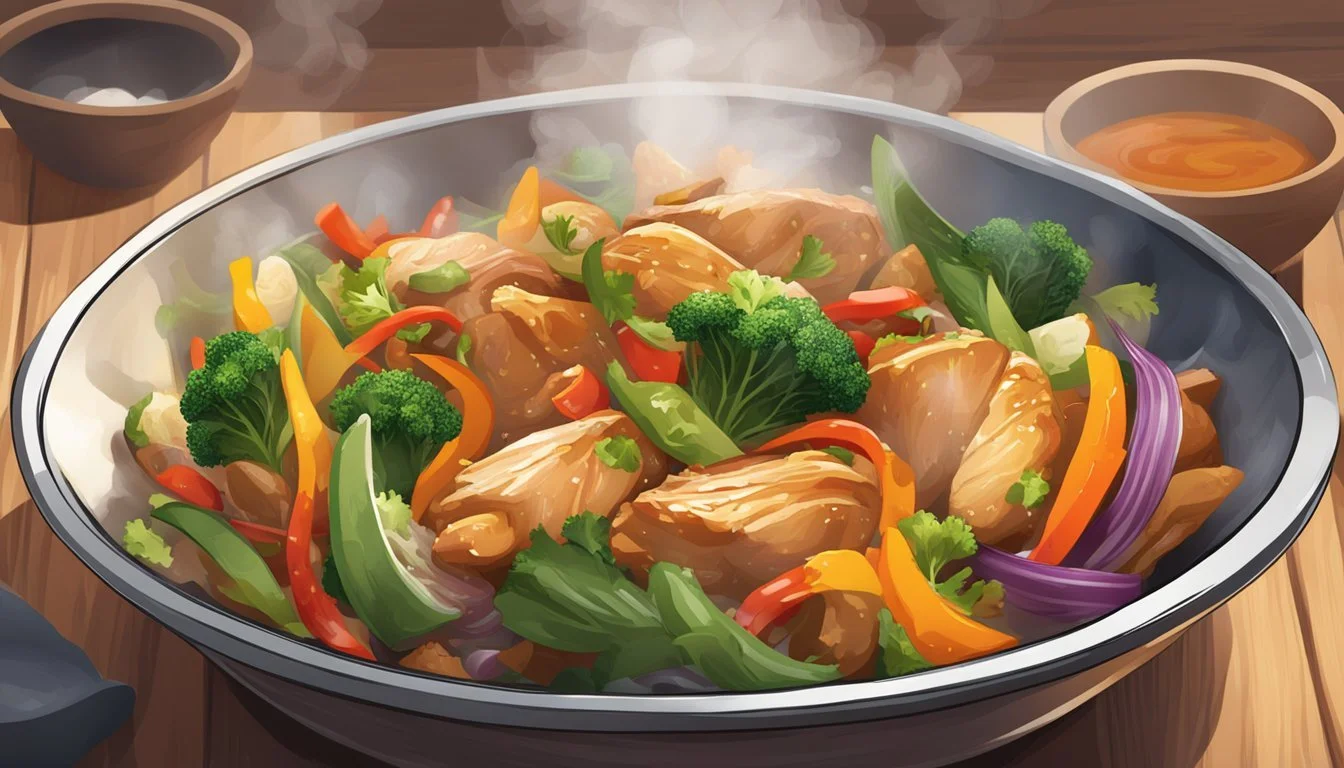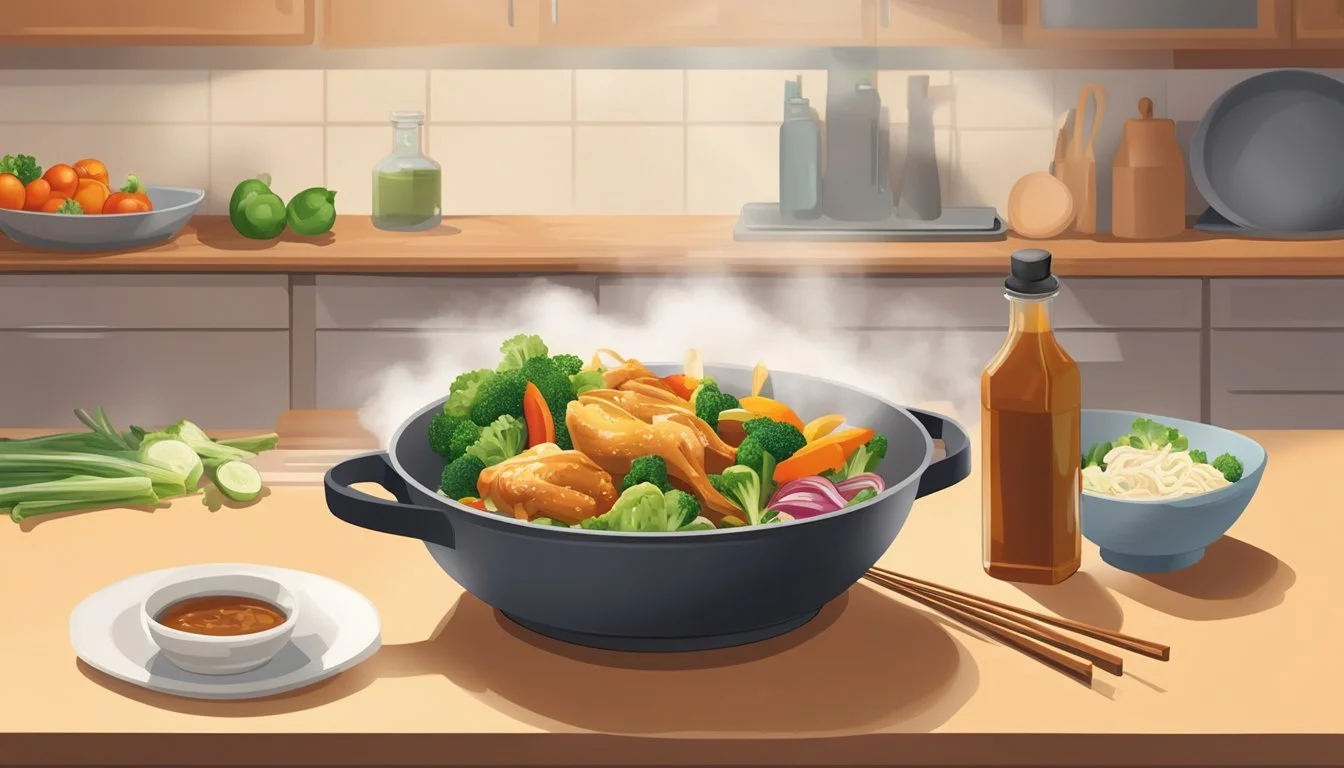How Long Do Chicken Stir-Fry Bowls Last?
Storage Tips and Shelf Life
Chicken stir-fry bowls are a popular and convenient meal option, combining various flavors and textures into a single dish. For those wondering about the storage life of this dish, chicken stir-fry bowls can last in the refrigerator for up to four days. This duration ensures that the meal remains safe to eat and maintains its taste and quality.
It's important to store the stir-fry in an airtight container and keep it at a safe temperature to extend its freshness. Reheating leftovers properly can help retain the deliciousness of the dish while ensuring food safety. Keeping these guidelines in mind can make enjoying your chicken stir-fry bowls a hassle-free experience.
Proper storage and handling are key to maximizing the shelf life of your chicken stir-fry bowls. Whether you’re meal prepping or dealing with leftovers, understanding how long your food lasts can save you from any unpleasant surprises.
Understanding Chicken Stir-Fry Bowls
Chicken stir-fry bowls combine a variety of flavorful ingredients to create a balanced and nutritious meal. The key components include the main protein, mixed vegetables, and a seasoning sauce that ties everything together.
Key Ingredients in Stir-Fry
A great chicken stir-fry starts with fresh ingredients. Essential components include:
Chicken: Typically cut into bite-size pieces, it serves as the primary protein source.
Vegetables: Common choices are bell peppers, broccoli, onions, and carrots, all chopped into bite-sized pieces.
Aromatics: Garlic and ginger are crucial for adding depth of flavor.
Oil: Cooking often uses sesame oil or another high-heat oil for stir-frying.
Using fresh, quality ingredients ensures the best flavor and texture.
Role of Proteins and Vegetables
Protein is critical not just for taste but for nutritional value. Chicken provides lean protein, helping to keep the dish healthy.
Vegetables add flavor, texture, and essential nutrients. They are often flash-cooked to retain their crunch and nutritional content. Each type of vegetable provides unique benefits, like the vitamin C in bell peppers or the fiber in broccoli.
Balancing protein and vegetables helps create a meal that is both satisfying and nutritious.
Flavoring Components: Sauce and Seasoning
The sauce in a chicken stir-fry often includes a combination of soy sauce, oyster sauce, and chicken broth for umami richness. Ingredients like brown sugar or honey add sweetness, while cornstarch can thicken the mix.
Seasoning elements such as garlic, ginger, and sesame oil are indispensable. They help layers of flavor build within the dish.
Properly seasoning with these elements makes the dish flavorful and aromatic, ensuring a delightful meal experience every time.
Proper Storage for Freshness and Safety
Proper storage of chicken stir-fry bowls is essential to maintain their freshness and ensure safety. Key factors include using the right containers, following refrigeration guidelines, and properly freezing and thawing practices.
Choosing the Right Containers
Using airtight containers is crucial to keep chicken stir-fry bowls fresh. Airtight containers prevent the entry of bacteria and minimize exposure to air, which can cause spoilage. Glass containers are a preferred option as they do not retain odors and are easy to clean. Alternatively, high-quality plastic containers that are marked as food-safe can be used. It is important to ensure that the lids are properly sealed to maintain the integrity of the stored food.
Refrigeration Guidelines
The refrigerator temperature should be maintained at or below 40°F (4°C) to inhibit bacterial growth. Cooked chicken stir-fry should be stored within two hours of cooking to avoid the danger zone (40°F to 140°F), where bacteria can multiply rapidly. Properly stored in the refrigerator, chicken stir-fry bowls can last 3-4 days. Label the containers with the date to track the storage time and avoid consuming spoiled food for food safety.
Freezing and Thawing Practices
Freezing chicken stir-fry bowls can extend their shelf life up to 3 months. Use either airtight containers or heavy-duty plastic bags that are freezer-safe. Remove as much air as possible from the bags before sealing to prevent freezer burn. To thaw, transfer the frozen stir-fry to the refrigerator and allow it to defrost overnight. If in a hurry, the microwave can be used on the defrost setting, but this method should be followed by immediate cooking to ensure safety. Avoid thawing at room temperature, as this can bring the food into the danger zone where bacteria can thrive.
Maximizing the Lifespan of Your Stir-Fry
Properly preparing and storing your chicken stir-fry can significantly extend its shelf life while ensuring it remains delicious and safe to eat. This involves attention to cooking practices, vigilant monitoring for spoilage, and effective storage techniques.
Optimal Cooking Time and Techniques
Cooking chicken thoroughly is crucial in maximizing the dish's longevity. Chicken should reach an internal temperature of 165°F to kill any harmful bacteria. Stir-frying involves cooking quickly over high heat, which preserves the texture and flavor while also safeguarding against bacteria growth.
Use fresh, high-quality ingredients. Avoid overcooking vegetables; they should remain tender-crisp, not soggy, to ensure they retain their nutritional value and texture until reheated.
Store leftover stir-fry in an airtight container immediately after cooking to prevent contamination and moisture loss.
Signs of Spoilage and Food Safety
Inspecting your stir-fry for signs of spoilage is essential. Look for changes in appearance, texture, and smell. Any noticeable color changes, such as dull or darkened vegetables and meat, indicate spoilage. A slimy texture on the chicken or vegetables suggests bacterial growth.
Smelling the stir-fry is another effective method. A sour or unusual odor typically means the dish is no longer safe to eat. Always err on the side of caution to prevent foodborne illnesses.
Tips to Prevent Deterioration
Refrigerate promptly. Stir-fry should be stored in the refrigerator within two hours of cooking to minimize bacteria growth. Use an airtight container to maintain freshness and prevent contamination.
For longer storage, freeze the stir-fry. Divide it into portions in airtight containers or durable freezer bags. This not only helps retain the dish's shelf life but also ensures convenient future meals.
When reheating, ensure the stir-fry reaches an internal temperature of 165°F to kill any potential bacteria. Avoid reheating more than once, as repeated heating and cooling cycles can compromise food quality and safety.
Reheating and Serving Leftover Stir-Fry
Reheating leftover chicken stir-fry can either bring back its fresh taste and texture or turn it into a lackluster meal. Knowing the correct methods ensures food safety and enhances the flavor.
Reheating for Best Taste and Texture
Microwave: Place the stir-fry in a microwave-safe dish. Cover with a paper towel and reheat on medium power for 90 seconds. Stir and check for doneness. Reheat in 30-second increments until steaming hot throughout. This method is quick but may soften the texture.
Stovetop: Heat a non-stick skillet over medium heat. Add a small amount of oil or butter. Add leftover chicken stir-fry and stir occasionally. Cook for 5-7 minutes, ensuring it heats evenly. This method retains more of the original texture.
Air Fryer: Set the air fryer to 350 degrees Fahrenheit. Place the stir-fry on a sheet of aluminum foil with the sides curled up. Air fry for five minutes, stirring halfway through. This keeps the stir-fry crispy.
Alternative Uses for Leftover Stir-Fry
Transform leftover stir-fry into new dishes to prevent waste and enjoy a variety of meals.
Fried Rice: Add leftover stir-fry to cooked rice, soy sauce, and a beaten egg. Stir-fry in a hot pan for a few minutes until everything is well mixed and heated.
Stir-Fry Wraps: Use cold stir-fry as a filling for wraps. Add fresh greens and a drizzle of your favorite sauce for a quick and delicious meal.
Stir-Fry Soup: Heat broth and add leftover stir-fry. Simmer until hot, creating a flavorful and wholesome soup.
By following these tips, you can reheat and repurpose your stir-fry to maintain its taste and enjoy different variations.
Additional Considerations
Chicken stir-fry bowls offer ample flexibility for dietary adjustments and creative variations. Exploring substitutions or adding new ingredients can elevate the dish nutritionally and flavor-wise.
Dietary Adjustments and Substitutions
Those seeking a gluten-free option can replace soy sauce with tamari or coconut aminos. For a low-carb alternative, substitute rice with cauliflower rice or quinoa. Swapping regular noodles for zucchini noodles is another option to reduce carbohydrate intake.
Vegetarian or vegan variations can be achieved by replacing chicken with tofu or a mix of mushrooms and bell peppers. Increasing the proportion of broccoli, carrots, and bok choy can add more vitamins and fiber. For better flavor, consider adding green onions and sprinkling sesame seeds before serving.
Creative Stir-Fry Variations
Chicken stir-fry bowls are versatile and can feature an array of ingredients. Replacing chicken with beef strips or shrimp offers variety. Substituting chicken breasts with thighs can enhance the dish's richness.
Adding vegetables like green onion, broccoli, and bell peppers can create a more colorful and nutritious bowl. Tossing in mushrooms and adding a handful of cauliflower florets enhances texture.
Experiment with different bases like brown rice, noodles, or quinoa. Spice up the dish with sesame seeds or a dash of sriracha for extra heat. These tweaks keep chicken stir-fry bowls exciting and adaptable to individual tastes.
Tools and Techniques for Perfect Stir-Fry
For achieving a perfect chicken stir-fry, selecting the right wok or pan and monitoring the internal temperature are crucial elements.
The Right Wok or Pan
Using a wok is ideal for stir-frying due to its shape and heat distribution. A 14-inch carbon steel wok is preferred for both home and professional kitchens. It allows for high-temperature cooking without overcooking or drying out the ingredients.
When choosing a wok, ensure it is well-seasoned to prevent sticking. If a wok isn’t available, a large, heavy-bottomed frying pan with good heat retention can also work. These tools help in achieving a sear that locks in the flavors of the chicken and vegetables.
Achieving Ideal Internal Temperature
The internal temperature of the chicken is vital for food safety and texture. Use a meat thermometer to check that chicken pieces reach 165°F (74°C). Cooking at too high a temperature can lead to overcooking and drying out the meat.
To maintain this, cook chicken in small batches. This ensures even cooking without crowding the wok. Using vegetable oil with a high smoke point, like canola or peanut oil, can help achieve a better sear and flavor.
By focusing on these tools and techniques, one can create a perfectly cooked chicken stir-fry with minimal effort and maximum flavor.







